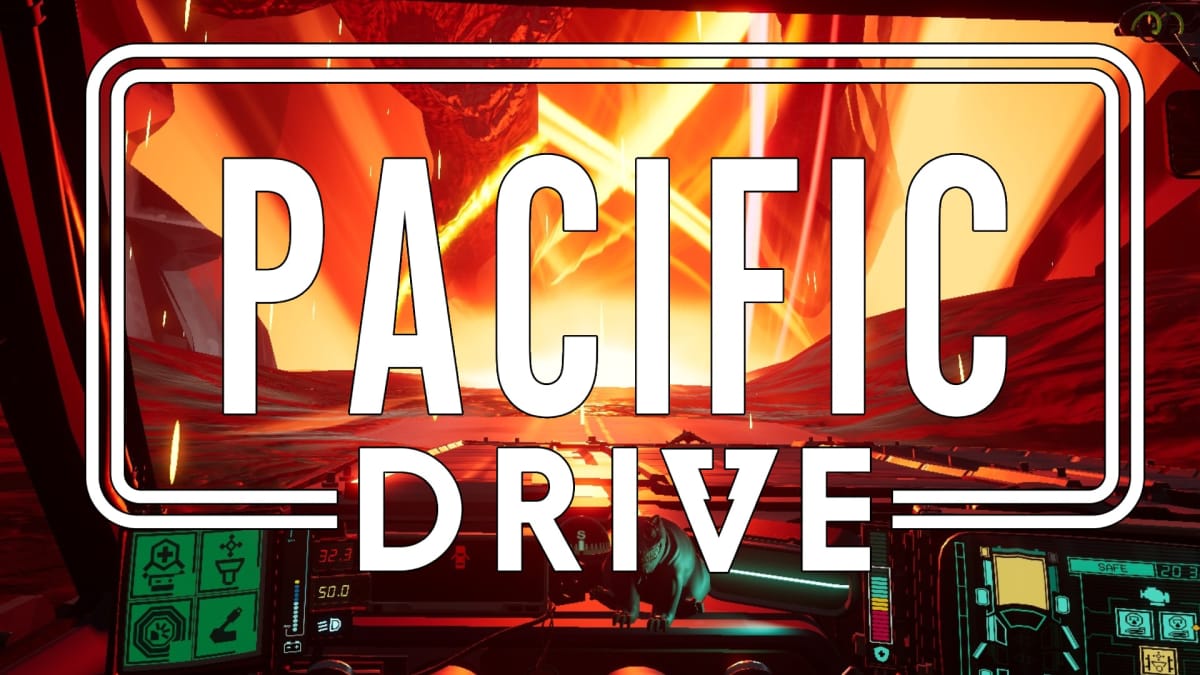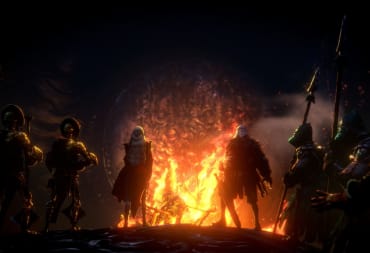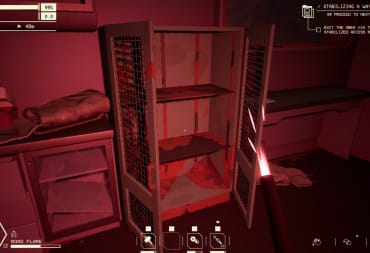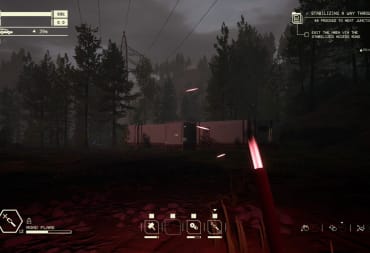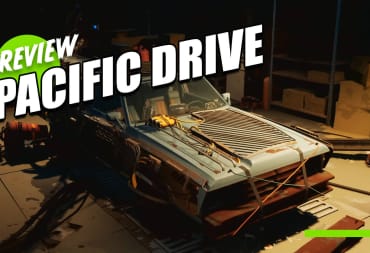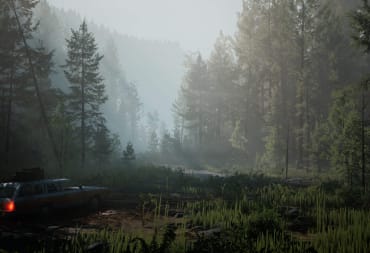This Pacific Drive review will tell you how we get on during our West Coast adventure in this atom-flavored, mad-science romp.
If you enjoy this review, you might want to check out our other reviews, like our recent review of Christian Whitehead's new platformer Penny's Big Breakaway. We've also done a review of runaway sensation Helldivers 2 for you to feast your eyes upon.
What is Pacific Drive?
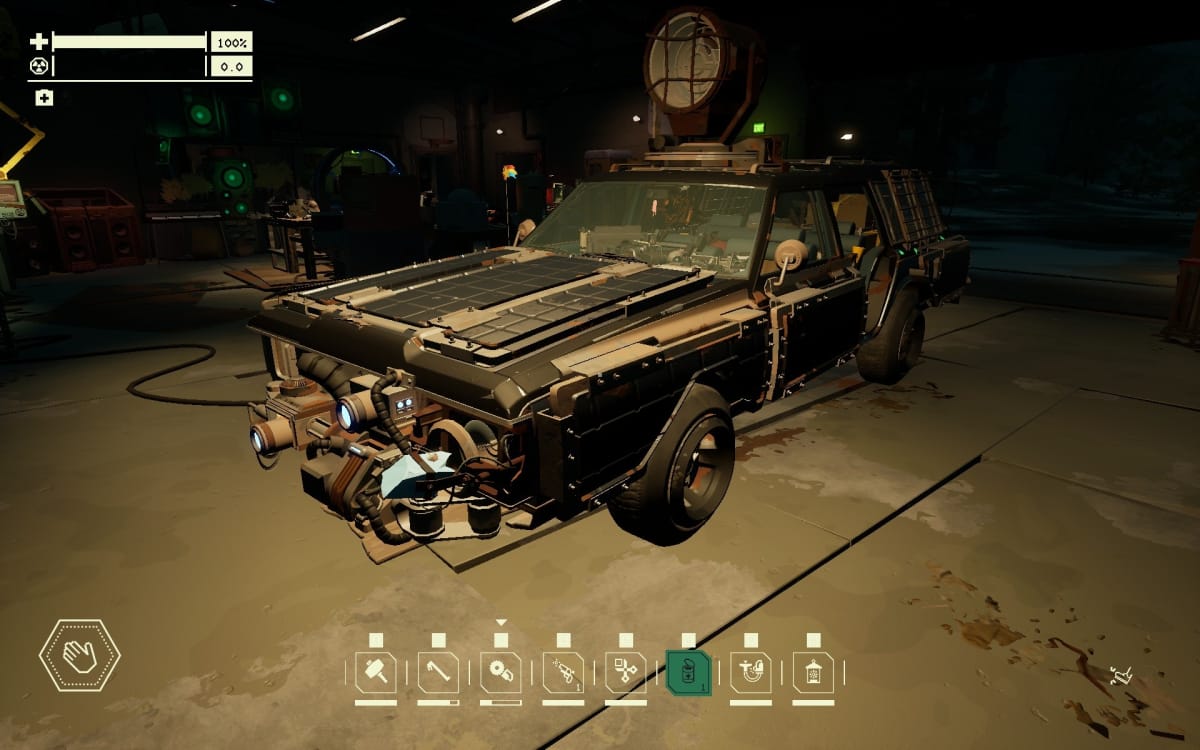
Pacific Drive is a driving simulator rogue-lite explore-a-thon that feels like My Summer Car meets Ray Bradbury, in that it’s almost a Fumblecore driving experience with the annoyance dialed back and a schlocky sci-fi story thrown into the mix as well.
You, a delivery driver, have been tasked with delivering something along the Pacific Coast, with the slight hiccup being that the entire Pacific Peninsula has been closed off for decades due to some company turning it into an irradiated hellhole full of Metro 2033-esque anomalies and other mad science mambo jumbo.
During your routine delivery, you get just a little bit too close to the wall that leads into the exclusion zone, and for narrative reasons, you get sucked inside. Finding yourself metaphysically conjoined to a suspiciously helpful car, it’s up to you and the handful of voices on your radio to figure out how to break the link and get you out of the zone.
Adventures in the Zone
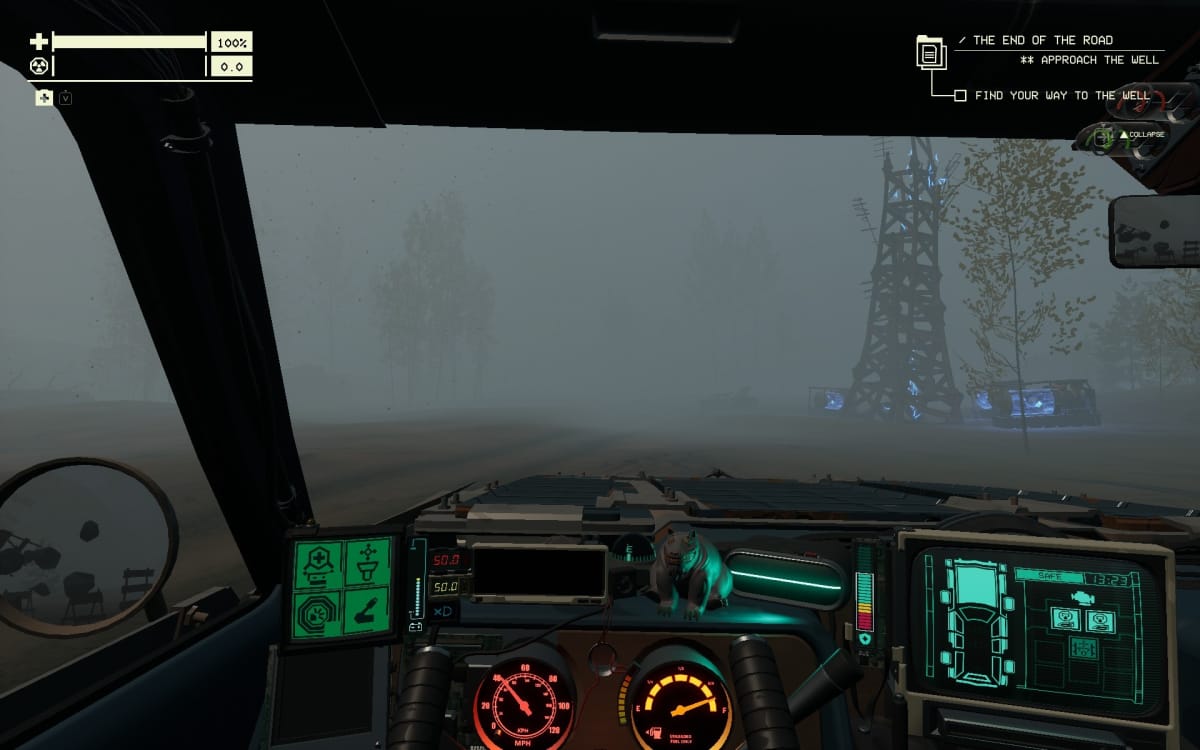
The central gameplay loop for Pacific Drive is pretty engaging right from the off, even before you get your hands on the advanced equipment and mechanics. Your job is to take excursions out into the zone, collect resources, and scan anomalies, then collect energy and warp yourself back to your home base, in this case, a garage. When you return back to your base, you can install and unlock upgrades and repair your car for your next excursion.
There’s a great sense of ramping up the gameplay, especially in the early stages. At first, it seems like most productions will come down to the same handful of basic resources, so your journeys are a little predictable, but before long you’re exploring new areas that are filled with harder-to-obtain resources, and various incredibly dangerous anomalies for you to deal with.
Early on your car will take damage insanely easily, and it’s up to you to unlock the upgrades you need to survive, especially as you approach the second and third areas. The only problem is that, due to the semi-random nature of item placement, you can occasionally find it quite hard to obtain specific resources or unlock specific upgrades.
Exploration is the Key to Expansion
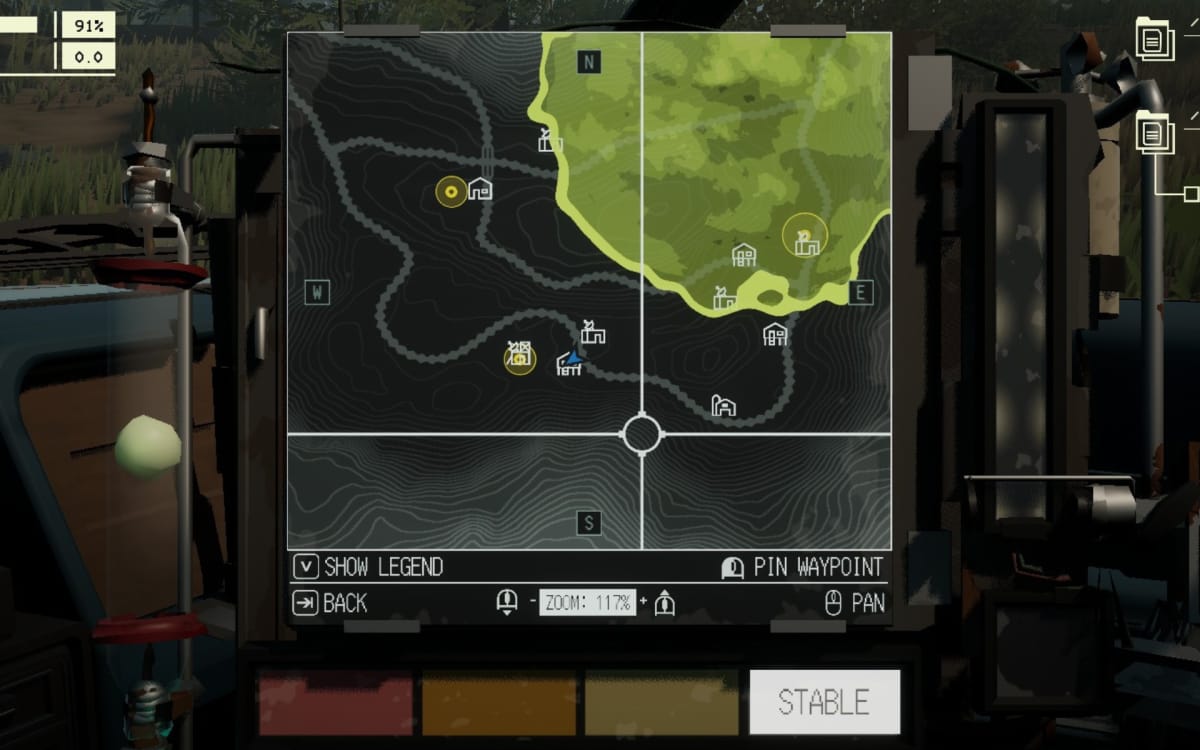
Each upgrade has various requirements, not just the stuff needed to actually generate a blueprint or new module for your home base, but normally other dependencies you must have unlocked to research this new technology. In many cases, these dependencies require you to have found and scanned various features of the landscape, from abandoned vehicles to anomalies.
It can be a struggle sometimes to find the correct anomalies you need for upgrades, or to come across a vehicle or building you’ve not already scanned. Even towards the end of my time with the game, there were various different map features that I hadn’t been able to find, with their section on the route planner blocked out in shame.
Quirks and Bumps in the Road
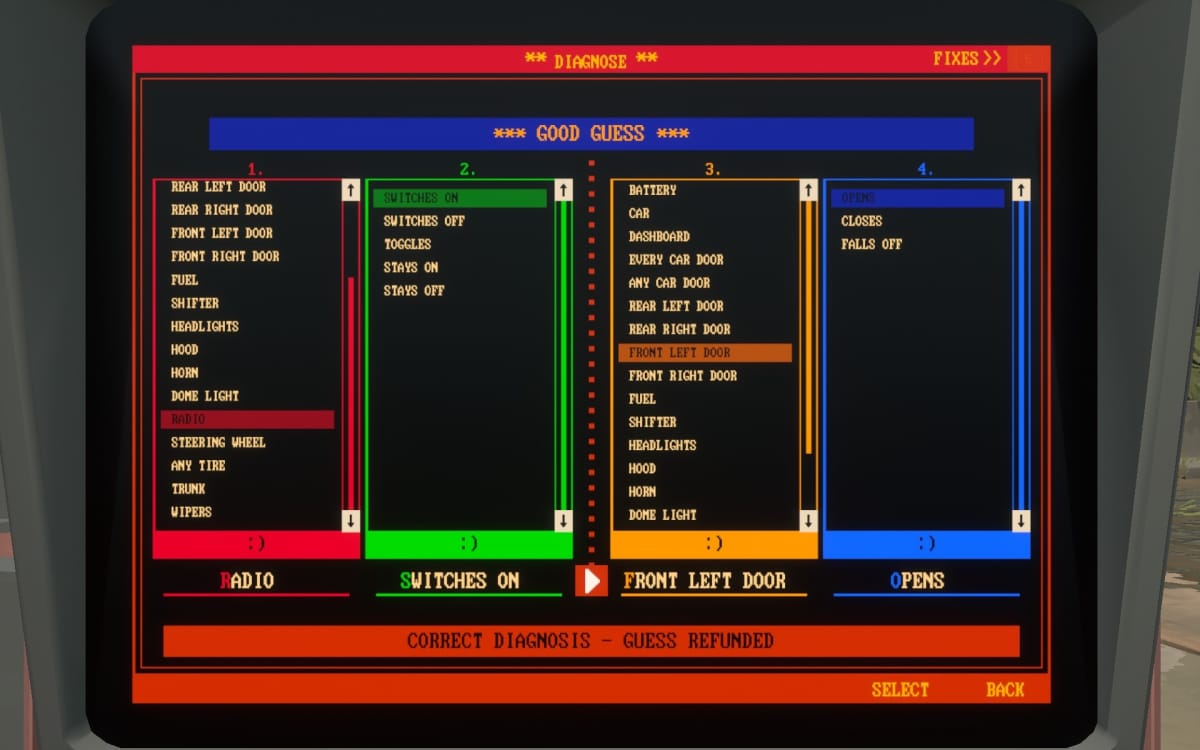
There’s also a pretty steep learning curve with the Tinker Machine. As you drive around the world, crashing into exploding manakins, your car will develop weird quirks and faults. These can range from your wipers turning on when you turn your lights on, to more severe stuff like, you can’t go forward with your lights on.
These problems can only be fixed using the Tinker Machine, and it’s not the most well-explained device in the game. It feels like you’re playing Mastermind (the board game, not the show) and even then, it’s barely useable right up until you fully upgrade it. Half the time I just lived with the quirks because it was less of a bother than fixing them.
Of Sight and Sound
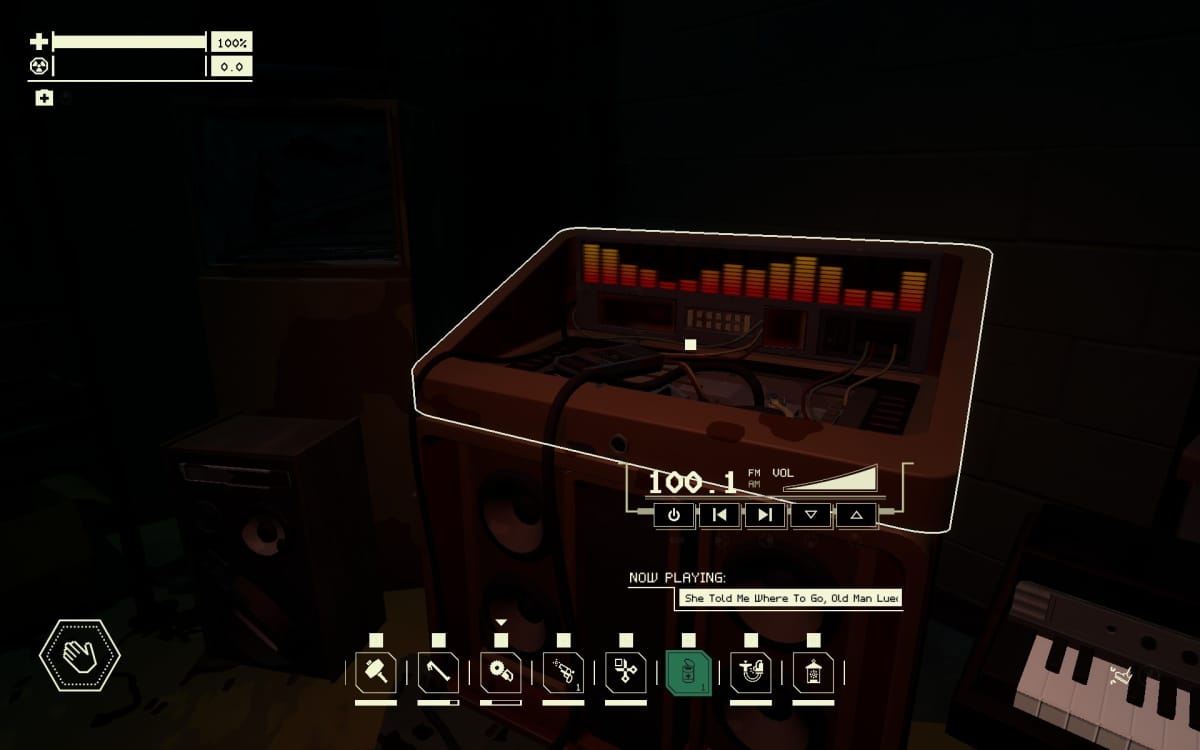
On the bright side, Pacific Drive is a treat both visually and musically. While the medium has hit something of a brick wall with graphics in the past generation or so, it’s always worth remembering that a consistent visual theme and style is worth striving for. To match the mad science vibes of the storyline, the game has dark visual undercurrents, while the wacky oversimplicity of 30s pulp sci-fi stories bleeds into the various objects in the world.
There’s a vague sense of time too, with everything having a vague retro-futuristic edge. You can find various Game Boy-esque devices hanging around, and the car you are driving is the most generic station wagon in the universe, giving proceedings a late 80s/early90s vibe that works wonders in many ways.
The music is also pretty great, though not the most present ever. There’s a mixture of different genres, with some chill country-style jams and an equal amount of synth-fuelled tracks. It’s all accessed through a real in-car radio too, or a jukebox in your garage, which helps the immersion factor tons.
Early on I listened to the in-car radio all the time, but it only works while you’re actually in the car or the home base. When you’re scouring the landscape for resources on foot, the game is nearly silent in terms of music. Plus it feels like 50% of the quirks my car got were designed to make the radio unusable, so after a while, I just had to give up on it. Still, the soundtrack is going in my music library for the foreseeable future.
The Verdict
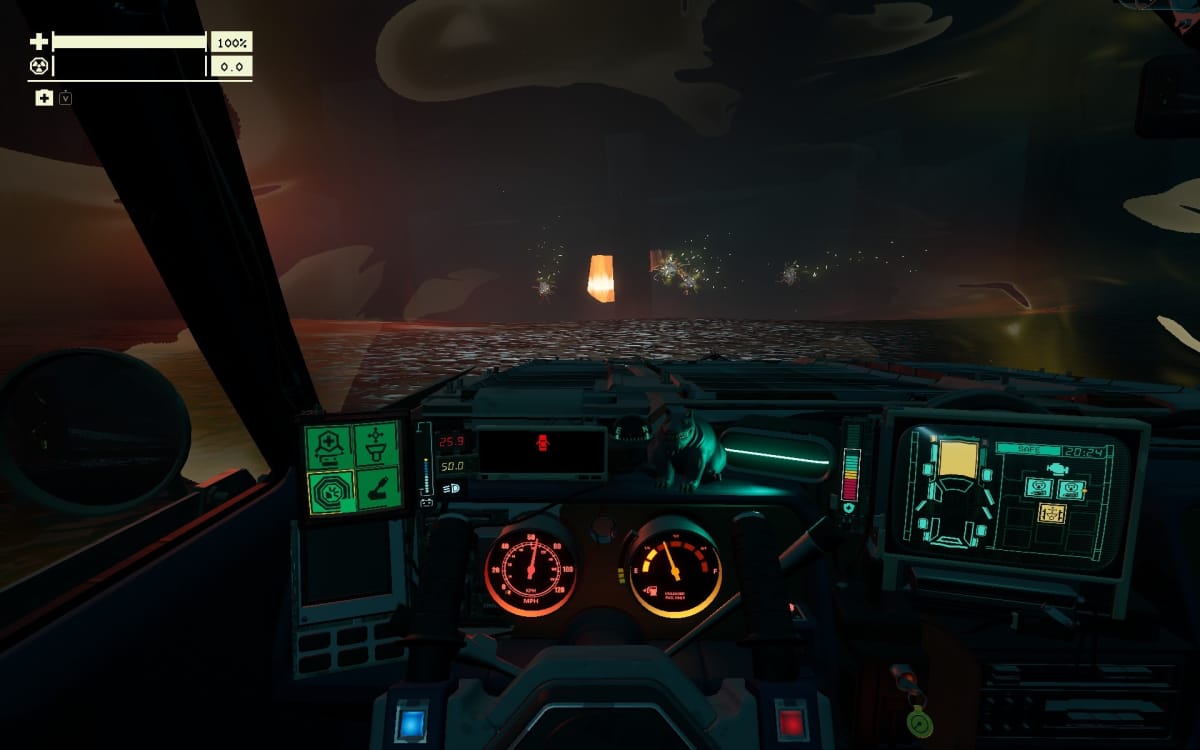
Overall, Pacific Drive is a game about immersing yourself in an Atomic Adventure. You can spend your time inventing mad science devices, crashing into space-warping anomalies, and discovering endless dangerous routes through a scarred landscape. While it’s far from perfect and made some quality-of-life sacrifices for immersion, it pays off in the end. There will never be anything more epic than facing down a highway with a glowing column of light above it, switching on the radio, and flooring it into the unknown. Assuming your radios still working that is.
Pacific Drive was reviewed on PC via Steam with a copy provided by the Developer over the course of 44 hours of gameplay - all screenshots were taken during the process of review.
Review Summary
Pros
- Engaging Core Gameplay Loop
- Music and Visuals Fit Perfectly
- Well-Written Story and Characters
Cons
- Randomization of Maps Give RNG Feel to Resource Hunting
- Some QOL Features Sacrificed To Improve Immersion
Have a tip, or want to point out something we missed? Leave a Comment or e-mail us at tips@techraptor.net
